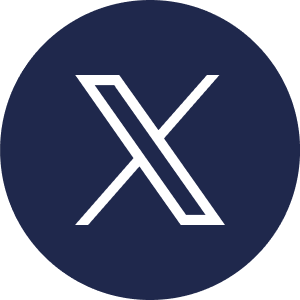
Data collection is one of the assessor's most important activities. This article is a brief overview of the five most common methods currently used in the field.
The Analog Method: A Paper-Based Approach
Writing directly on a paper property record card (PRC) and using a measuring tape is the original, most commonly used form of data collection. Data collectors log construction detail changes, measurements, sketch updates, and property notes on paper PRCs. They take photos with a camera and log them separately on paper, which they then match to a specific parcel during data entry. After the onsite inspection, the data collector or data entry technician enters all changes into the assessor’s computer-aided mass appraisal (CAMA) system.
Advantages
The analog method is simple to understand and easy to use. Data collectors gather only the data outlined on the card and use a pencil and a tape measure. Updating a property record in the field is straightforward—the data collector simply crosses off the current value of a particular detail and writes a new one or changes a sketch with a few strokes of a pencil.
Preparation is uncomplicated and initially cost-effective. Offices merely print and distribute inexpensive paper PRCs.
Challenges
Paper's simple, but this simplicity comes with trade-offs in accuracy and efficiency.
First, transferring changes from a paper PRC to the CAMA system is time-consuming and error-prone. It takes a long time to locate a change on the card and then find the changed element on the computer screen. It’s common for data collectors to transpose a change to the wrong field.
Second, long-term maintenance and storage of PRCs is difficult. Paper is fragile and easily damaged by water, tearing, or crumpling. Over time, ink fades. In terms of storage, assessors sometimes sacrifice whole rooms to store old PRCs for audits or archives.
Third, tape measures or laser measurers aren’t always practical. Data collectors know how difficult it can be to measure a property with obstructions surrounding it. In many cases, data collectors will estimate measurements when obstacles prevent measurement.
Direct CAMA Entry During Onsite Visits
An alternative to a paper-based workflow is a digital workflow where the data collector directly enters changes into the CAMA system using a mobile device or laptop while in the field. This approach gets property data into the CAMA system quickly and eliminates the data entry step.
Advantages
Data collection and data entry merge into one step. Data collectors enjoy key benefits like no transposition errors, real-time updates, and access to complete property data.
Challenges
Unfortunately, reducing the number of steps in the process is offset by the time needed to find and enter data into the CAMA system. CAMA systems are designed for desktop use and don’t display data in a field-friendly way. Updating property elements under time pressure during inspections is challenging, and it's difficult to sketch with a touchpad. Some data collectors find the volume of data displayed overwhelming, especially when much of it is irrelevant to a property inspection.
Additionally, direct data entry relies on stable internet connectivity; once a data collector loses a connection, they must record data on paper and transfer it later to the CAMA system, so the benefits of direct data entry are lost.
PDF Property Record Cards
Assessors use PDF versions of PRCs on tablets to take advantage of digital data collection's unlimited storage and easy maintenance while leveraging the ease of use of a paper property record card. Like the analog method, a data entry technician inputs the data, sketches, and photographs into the CAMA system back at the office.
Advantages
PDF PRCs are easy to organize and store. There are no printing costs, changes are easy to archive, and the method is very user-friendly. Using a stylus, a data collector’s data collection process is the same as it would be with a paper PRC.
Challenges
Like the analog method, transferring changes from a digital PRC to the CAMA system is time-consuming and prone to human error. Photographs still must be logged manually and uploaded in the office.
Desktop Review
The desktop review, an increasingly popular method, allows data collectors to virtually review properties using digital imaging tools, such as aerial photos, high-resolution street views, orthophotos, low-level oblique images, and sales listings. These sources help the data collector to verify measurements, space usage, and interior and exterior details.
Advantages
Smaller teams are required for desktop reviews and don't require travel, which lowers labor and travel costs. Data technicians can quickly pull up PRCs, property photos, and measurements; changes are input directly into the CAMA system, cutting out the data entry step.
Limitations:
Desktop reviews are tedious and require multiple screens or printed PRCs to compare data accurately. Their accuracy depends on up-to-date images and information from third-party data sources, which are often outdated. Additionally, this approach does not include an interior inspection, which is necessary to verify the most current property conditions.
Going Fully Digital
When using a completely digital workflow, data collectors use specialized mobile tablet systems that are loaded with digital PRCs, sketching tools, and automatic photo-logging capability. These systems streamline measuring, recording, and data entry. Advanced technologies, like LiDAR scanning and photogrammetry, used in conjunction with a mobile tablet system, enhance the precision and efficiency of data capture.
Advantages:
Data collectors save time and avoid manual data entry, especially when the system can pull and enter data directly into the system. All data is stored digitally, making it easy to manage multiple property record cards, to take hundreds or thousands of photos, and to prepare for and to execute numerous types of data collection projects.
Limitations:
Digital systems require training, and inspectors may need time to adapt. The effectiveness of a fully digital system depends on the quality of the capture system and training; poor designs or insufficient training can create bottlenecks, slowing data collection and raising costs. A quality digital system must be compatible with the CAMA system.
Navigating the Future of Real Estate Data Collection

Each data collection method—pen and paper, direct to CAMA system, PDF property card, desktop review, or a fully digital setup—has unique benefits and trade-offs. An analog system is appealing because it is easy to use, cheap, and straightforward. However, as accessible as it is, collecting data this way is error-prone and time-consuming.
On the other hand, fully digital systems provide the most reliable, precise data with fewer errors and better control over accuracy. Although data collectors must spend time integrating the data capture system with the CAMA and training users, digital systems offer the most streamlined workflow.
Selecting the right data collection method depends on a jurisdiction's needs, budget, and technological readiness. By considering each method’s efficiency and limitations, assessors can choose one that best serves their jurisdiction now and in the future.

Ready to get in touch?
By
Dara Bridges
at
CIDARE, Inc.
By
Dara Bridges
at
CIDARE, Inc.
Updated On:
January 7, 2025 at 8:42:50 PM







